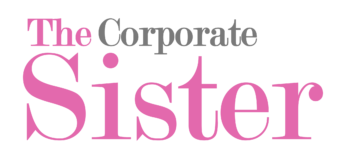 The final version of the Tax Cuts and Jobs Act was passed on December 20, 2017. There are many aspects to this new tax plan, which mostly benefit corporations and wealthy people. However, one aspect that may be overlooked is the impact it can have on working women and their families.
The final version of the Tax Cuts and Jobs Act was passed on December 20, 2017. There are many aspects to this new tax plan, which mostly benefit corporations and wealthy people. However, one aspect that may be overlooked is the impact it can have on working women and their families.

The new Tax Bill will raise taxes for over 83 million middle-class families in the U.S, and it also will have important implications for employees and careers. Here are various implications for you and your family if you’re a working woman:
-
Your tax rates will be lowered (although the income tax brackets will remain the same)
| New Tax Bill Rates and Income Brackets | |||
| New Tax Plan Rates | Current tax plan rates | Married Filing Jointly- Income Levels | Single- Income Levels |
| 10% | 10% | $0-$19,050 | $0-$9,525 |
| 12% | 15% | $19,050-$77,400 | $9,525-$38,700 |
| 22% | 25% | $77,400-$165,000 | $38,700-$82,500 |
| 24% | 28% | $165,000-$315,000 | $82,500-$157,500 |
| 32% | 33% | $315,000-$400,000 | $157,500-$200,000 |
| 35% | 33%-35% | $400,000-$600,000 | $200,000-$500,000 |
| 37% | 39.60% | $600,000+ | $500,000+ |
Please note that these rates revert to the current rates in 2026.
-
The standard deduction has been doubled
When filling out your tax return this year, you’re able to choose between the standard deduction or your itemized deductions to deduct from your Adjusted Gross Income in order to get your taxable income. If you don’t qualify to itemize your deductions, then you may have to choose the standard deduction.
If you’re a single filer, your standard deduction just went from $6,350 to $12,000. If your status is Married Filing Joint, your standard deduction is now $24,000 from $12,700 under the old tax plan. Note that this change will revert back in 2026.
Since the standard deduction has now increased to such levels, it’s more likely that most taxpayers will pick it over their itemized deductions.
-
Most of your itemized deductions are now eliminated
Itemized deductions are made of various types of expenses you incur throughout the year. If the total of your itemized deductions exceeds the standard deduction, your best bet is to deduct those itemized expenses instead. These generally include your home mortgage interest, property, state and local income taxes, investment interest expense, medical expenses, charitable contributions, miscellaneous expenses.
Some itemized deductions that are now eliminated include your moving expenses, with the exception of members of the military. If you are paying interest on your home equity line of credit, you can no longer deduct this.
However, the following deductions have not been eliminated:
- Charitable contributions
- Property taxes
- Mortgage interest
- Property taxes
- Retirement savings
- Student loan interest
Note that the deduction on mortgage interest is now limited to the first $75,000 of the related loan. As for state and local income taxes, taxpayers can deduct up to $10,000 whereas there was no cap before.
Good news! Your medical expenses deduction is now expanded for 2017 and 2018, as you can now deduct medical expenses that are 7.5% or more of your income. This is in contrast to being able to deduct medical expenses that are 10% or more of your income in the old plan.
-
No more personal exemptions!
A personal exemption is the amount you can deduct from your income for each taxpayer and dependent you’re claiming on your tax return. You can claim a child, friend, relative, fiancé (etc) as a dependent on your tax return.
Under the old plan, you were able to deduct $4,050 per person claimed on your tax return. These exemptions are now eliminated, which puts families with many children or dependents at a disadvantage.
-
Child and Elder Care Deductions Are Increased
You may be able to claim the child and dependent care credit if you incurred expenses for the care of a qualifying person to allow you (and your spouse if filing a joint return) to work or look for employment. Under the new Tax plan, the Child Tax Credit has been increased from $1,000 to $2,000, but only $1,400 at most will be refundable against payroll taxes.
If you have a 529 plan or are planning to have one, you can now use it for tuition at private and religious K-12 schools. You can also use these funds for any homeschooling expenses you incur.
If you’re caring for a non-child dependent, you can claim a $500 credit. This is especially helpful if you’re caring for elderly parents.
-
Your job expenses and miscellaneous deductions are gone!
Under the old tax plan, you could deduct miscellaneous deductions exceeding 2% of your Adjusted Gross Income (AGI). However, these deductions are eliminated from 2018 through 2025. These include unreimbursed employee expenses such as tools and supplies, as well as tax preparation expenses. Note that this doesn’t affect business-related deductions.
Overall, this new tax plan helps higher-income individuals and families the most. However, the changes to Obamacare may mean that less women may have access to healthcare. Career-related expenses which could have benefited women to further their careers are also gone. There are many changes involved, so make sure to consult with a professional if in doubt.
To Your Success,
The Corporate Sister.








